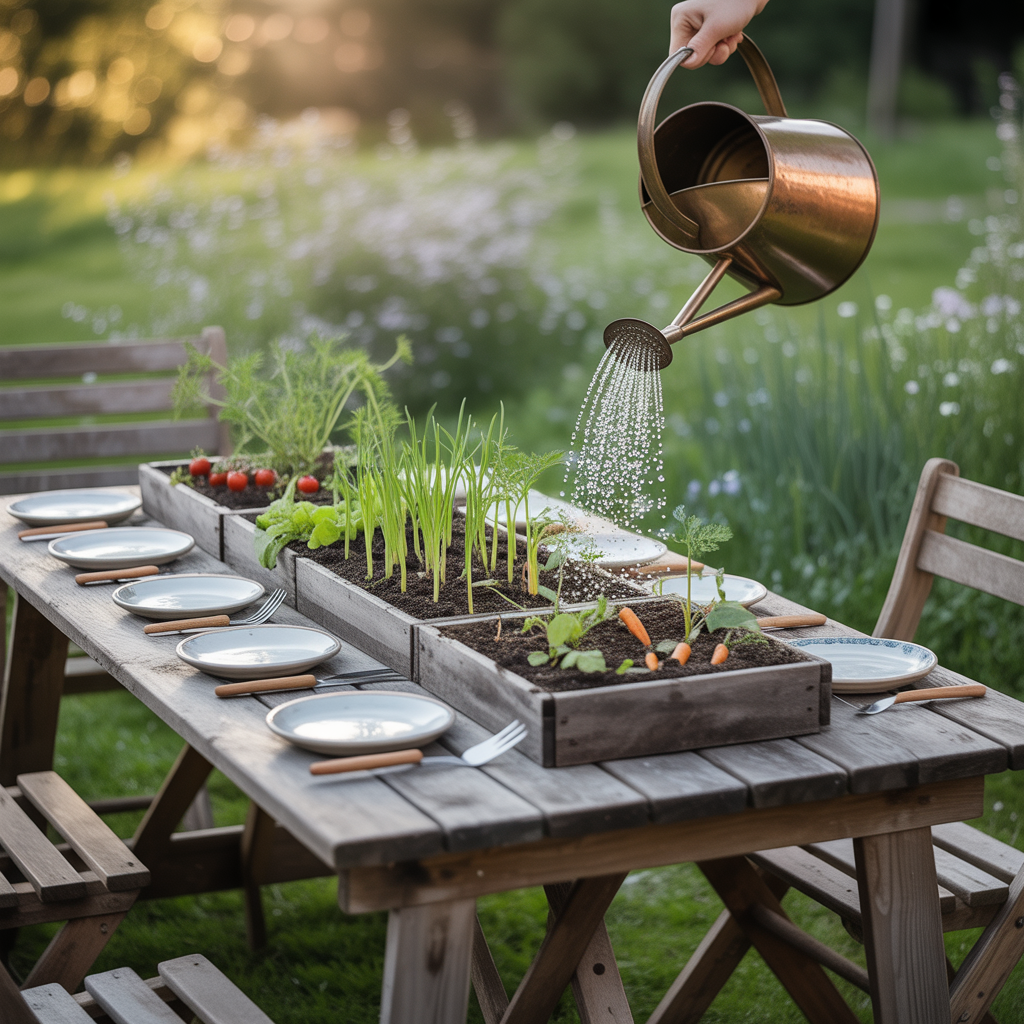
10 Things You Should Know Before Setting Up Your Own Kitchen Garden
Starting a kitchen garden is exciting, but knowing a few practical facts before you plant your first seed will help you avoid mistakes and get a healthy, thriving garden. Whether you’re working with a small balcony or a spacious backyard, these essentials will set you up for success.
1. Space Requirements
You don’t need a huge plot. Even a 1–2 sq. ft. pot can grow herbs or leafy greens. Larger crops like tomatoes and capsicum need at least 12–18 inches of space per plant.
2. Sunlight Needs
Most vegetables and herbs need 4–6 hours of direct sunlight daily. Leafy greens can manage with partial shade, but fruiting plants (tomato, capsicum) need more sun to produce well.
3. Choosing the Right Soil
Kitchen gardens thrive in well-draining soil rich in organic matter. A good mix is 60% garden soil, 30% compost, and 10% sand or cocopeat to improve drainage.
4. Watering Frequency
Water deeply but less often most plants prefer soil that is moist but not soggy. In hot weather, check the soil daily and water in the early morning or late evening.
5. Suitable Plants for Beginners
Start with easy, fast-growing crops like spinach, basil, radish, or cherry tomatoes. These grow quickly and give you confidence as you learn.
6. Container vs. Ground Planting
If using containers, ensure they are at least 8–12 inches deep with drainage holes. For ground planting, loosen soil to 12 inches deep before planting.
7. Natural Pest Control
Introduce marigolds or basil alongside your vegetables to deter common pests. Neem oil sprays work well without harming beneficial insects.
8. Fertilizer & Plant Nutrition
Feed plants every 2–3 weeks with compost tea, seaweed solution, or organic fertilizers to keep them healthy. Avoid over-fertilizing, which can burn roots.
9. Seasonal Planning
Choose plants based on the season — spinach and lettuce prefer cooler months, while tomatoes and peppers grow best in warmer weather.
10. Harvesting Guidelines
Harvest leafy greens when leaves are young and tender. For fruiting plants, pick when the color is full and bright, but before over-ripening.
Share
